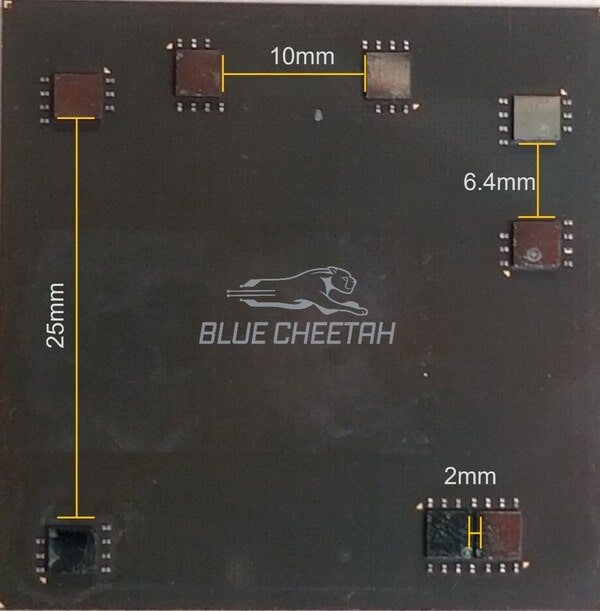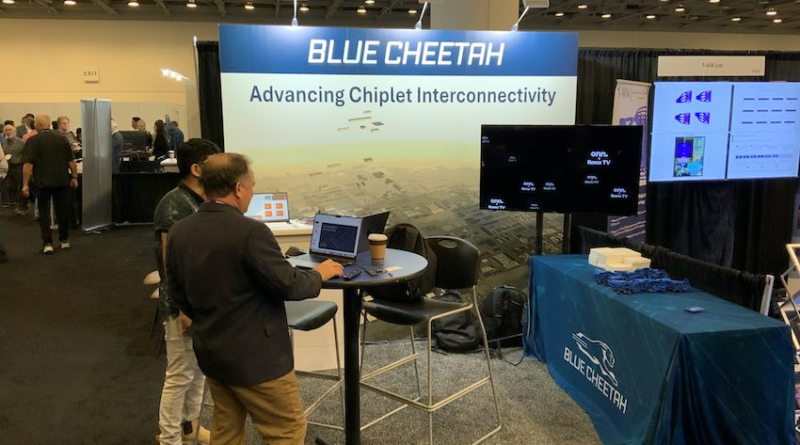Blue Cheetah Advancing Chiplet Kết nối liên thông #61DAC
At #61DAC, I love it when an exhibitor booth uses a descriptive tagline to explain what they do, like when the Blue Cheetah booth displayed Advancing Chiplet Interconnectivity. Immediately, I knew that they were an IP provider focusing on chiplets. I learned what sets them apart is how customizable their IP is to support specific physical and system bandwidth requirements, how the interconnect IP is configured for cost-sensitive or high-performance cases, how the energy and performance are optimized from 32 Gb/s down to 8Gb/s and lower, being process-ready at nodes from 16nm to 3nm, and finally having been silicon-proven with reference board designs. I sat down with John Lupienski, VP Product Engineering at Blue Cheetah, to better understand what they were all about. John’s background covers roles at Cadence, Broadcom, and Motorola.

Chiplet designers can opt for an industry-standard interconnect, such as UCIe or BOW, or something custom; Blue Cheetah supports either approach. Blue Cheetah is active with the emerging chiplet standards and is an active participant of both organizations. Smaller IO core area, lower energy per bit, tailor-fit designs are compelling reasons to talk with this IP vendor. The company can customize its IP links per each unique application and deliver solutions using advanced process technologies across multiple foundries and supporting standard and advanced packaging technologies. Its IP has been used in tape-outs for chiplet interconnects ranging from 16nm down to the 4nm node.
During DAC, Baya Systems and Blue Cheetah announced their combined chiplet-optimized Network on Chip (NoC) and Physical Layer (PHY) interconnect IP offerings, making it easier and less risky to design with chiplets. Tenstorrent, announced in February that it uses the Blue Cheetah die-to-die interconnect IP for its AI and RISC-V products. Tenstorrent recently announced that it also uses Baya Systems’ NoC fabric IP.
The demonstration at the booth showed test packages integrating 12nm chiplets (availability announced in May 2023) with channel lengths spanning 2mm up to 25mm. Blue Cheetah’s customers’ develop products for a wide variety of end markets; in addition to Tenstorrent, publicly known examples of Blue Cheetah’s customers and partners include DreamBig Semiconductor, FLC, and Ventana Microsystems.

The architecture of the interconnect IP is modular, making it quicker to port to newer process nodes. John mentioned that packaging for chiplets requires an engineer to perform SI/PI analysis, as customers often use an OSAT to assemble, and each chiplet can be fabricated at different nodes, so you really want interconnect IP that has been silicon-proven. To help get you started with chiplets, they offer reference boards and software to speed up the learning curve.
Summary
SoCs have been around for decades, while the trend of using chiplets has just started in the last several years. Blue Cheetah is a trailblazer in the industry and has solidified its position with high-speed, low-latency, power-efficient D2D BlueLynx™ interface products. The company’s standards-based and customizable IP solutions are available now in 16nm,12nm, 7nm, 6nm, 5nm, 4nm, 3nm, and below across multiple semiconductor foundries.
You can follow up with John directly or contact the company on its website for more info. The company appears at many events throughout the year, including DAC, Chiplet Summit, ISSCC, OCP Global Summit, SemIsreal Expo, and foundry events.
Related Blogs
Share this post via:

